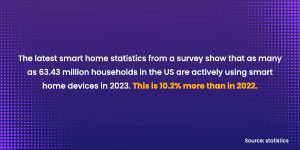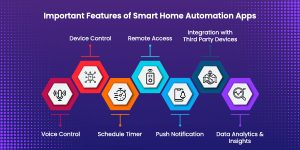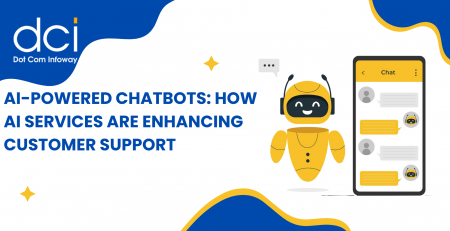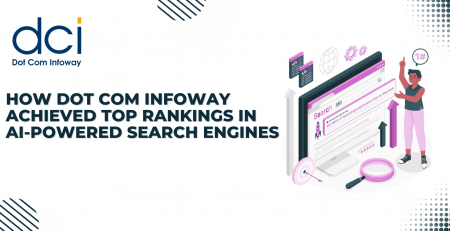Roadmap to Smart Home Automation App: Factors, Features & Costs
If you’ve heard of smart home automation apps and crave in-depth insights, you’ve landed in the perfect spot! Our beginner’s guide will lead you through the intricacies of your standard smart home automation app.
Top mobile app development companies have crafted these game-changers, reshaping our home interactions. Dive into the mechanics, the steps to create your own app, the indispensable features, and the factors influencing development costs.
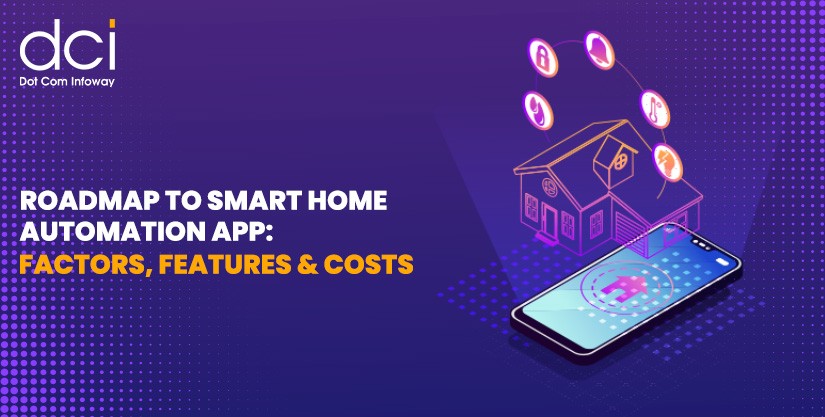
How Smart Home Automation Works?
Home automation software development has revolutionized modern living. Utilizing wireless technology, a central hub connects with smart devices such as thermostats, lights, and cameras.
This hub enables remote control through smart home app development or voice commands via virtual assistants like Google Assistant or Alexa. This technology amplifies convenience, energy efficiency, and security. You can create customized schedules, optimizing energy use with a purpose-built smart home automation app, developed with the help of wireless home automation development.
Additionally, smart home systems provide real-time security updates, enhancing peace of mind.
Guide for Creating a Smart Home Automation App
Developing a remarkable smart home automation app is a journey that demands careful attention to every crucial step. Each phase serves as a building block, collectively creating an app that not only functions flawlessly but also captivates and satisfies users.
As a top mobile app development company, these are the usual steps we follow when creating an app of this kind. Let’s dive deeper into the significance of each one,
1. Determining the Features and Functionalities
Imagine these two as the blueprint for your app’s success. By defining its purpose and features, you’re setting the stage for what makes your app unique and indispensable.
It’s vital to tailor your app to meet the specific needs and desires of your target audience. This step ensures that your app resonates with users, enhancing its long-term appeal.
Example features may include managing smart devices, creating automation rules, or monitoring energy usage.
2. Navigating the Market Landscape
Market research is your compass in the competitive landscape. Understanding what others offer, and more importantly, what they lack, is a key to setting your app apart.
It’s not just about creating an app; it’s about creating an app that stands out. In-depth analysis helps you uncover opportunities for innovation and differentiation.
3. Forging the UI/UX
As proven by the essentials of Android app development, your app’s user interface (UI) and user experience (UX) are the gateway to user engagement and satisfaction. A visually appealing and user-friendly design ensures users feel comfortable and delighted.
Create wireframes, mockups, or prototypes to outline the app’s structure, navigation flow, and element placement.
This step shapes how users interact with your app, making it a crucial element in user retention.
4. Building the Backend
Establish the necessary servers, databases, and APIs for data management and communication.
The backend is the backbone of your app, ensuring it runs smoothly and securely. Building a robust backend architecture is akin to constructing a sturdy foundation for a building.
Without a secure and scalable backend, even the most beautiful UI won’t shine. It’s the invisible work that guarantees seamless operations and user data protection.
5. Shaping Frontend Development
Prioritize coding in appropriate programming languages and frameworks to ensure seamless user interactions.
Focus on developing and integrating functions such as device control, automation, scheduling, and data monitoring with the backend infrastructure.
Remember that while the backend is the engine, the frontend is the face of your app. How it looks and behaves directly impacts user satisfaction.
6. Rigorous Testing and Refinement
Testing is the quality control of your app development process. It’s where you identify and address any imperfections or issues.
Ensuring that your app works as intended and remains consistent across various platforms is essential for user trust and app reliability.
7. Support Going Beyond the Launch
Launching your Smart home automation app is just the beginning. Ongoing support and maintenance ensure it remains relevant, secure, and competitive in the dynamic tech landscape.
Regular updates not only keep your app bug-free but also allow you to adapt to emerging technologies and evolving user needs.
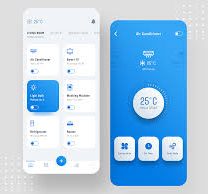
Unlock the Future with Smart Home App Development
Embrace the future of connected living with our smart home app development services. Let’s unlock innovation together!
Important Features of Smart Home Automation Apps
Now, let’s explore the key features of a smart home automation app and understand why each feature is essential:
1. Device Control
Centralized device control is at the heart of smart home automation. It provides users with a unified platform to oversee and manage all their connected devices. This convenience eliminates the need to juggle multiple apps, creating a seamless and user-friendly smart home experience.
2. Voice Control
Voice control epitomizes the hands-free, futuristic nature of smart home automation. Users can effortlessly interact with their smart devices by simply speaking commands. This feature transforms the way users manage their homes, making it more intuitive and accessible.
3. Remote Access
Remote access extends the boundaries of the smart home beyond its physical location. Users can monitor and control their devices from anywhere, enhancing convenience and security. Whether at work or on vacation, they can ensure their home is just the way they want it.
4. Schedule Timers
Timers and schedules are the backbone of automation. Users can program their smart devices to perform tasks at specific times or under certain conditions. This capability automates routine actions like adjusting lighting or temperature, ensuring that the smart home adapts to their lifestyle effortlessly.
5. Push Notifications
Push notifications keep users informed and in control. When integrated with smart sensors and security devices, users receive real-time alerts about critical events. This feature empowers them to respond swiftly to security breaches, environmental hazards, or other important occurrences in their smart home.
6. Data Analytics
Data analytics offer users a deeper understanding of their smart home’s performance. They can access information about device usage, energy consumption, and usage trends. Armed with these insights, users can make informed decisions to optimize their smart home, reduce energy costs, and tailor their automation settings to their liking.
Speaking of advancements, do you want to have a clearer insight with regard to the pivotal role of AI in mobile app development at present? We suggest you take the time to read that article as well.
7. Third-Party Device/Platform Integration
Smart homes are diverse ecosystems with devices from various brands and ecosystems. Integration with third-party devices and services ensures compatibility and interoperability. Users can expand and customize their smart home by adding devices that suit their preferences, fostering a truly connected and adaptive environment.
Factors Affecting the Development Costs
So what price tags do app development services usually attach to smart home automation app development?
Complexity of Features: The number and complexity of features greatly influence costs. Advanced features like voice control and third-party integrations tend to be pricier than basic functionalities like device control and scheduling.
Platforms and Devices: Supporting iOS, Android, or both can impact costs. Additionally, compatibility with various smart home devices and protocols like Wi-Fi, Zigbee, or Z-Wave may require additional development effort.
-
UI/UX Design
Attention to design detail, including animations, graphics, and branding, can affect development costs. High-quality UI/UX elements can make your app stand out but may come at an added expense
-
Integration with Hardware and APIs
Integrating your app with specific smart home devices may pose challenges and increase development time and costs. Compatibility issues should be addressed with expertise.
-
Security and Data Privacy
Ensuring data security and compliance with privacy regulations can add to development costs, particularly if robust security measures are essential.
-
Development Team Expertise
The location and experience of the development team can affect costs, as rates may vary by region.
In general, the cost of building a smart home automation app can range from $20,000 to $150,000, depending on feature complexity and other project intricacies.
To obtain a precise estimate tailored to your needs, consulting with a best smart home app development company is recommended. This ensures you receive a solution aligned with your unique requirements.
Conclusion
The world of smart home automation offers unparalleled convenience, security, and efficiency. Developing a Smart home automation app is an exciting endeavor, but it’s essential to understand that the cost of such an endeavor can vary significantly based on several factors. They all play pivotal roles in determining the overall cost.
To obtain a good strategy from the get-go and a precise estimate tailored to your needs, take the time to consult with experienced mobile app development services.

